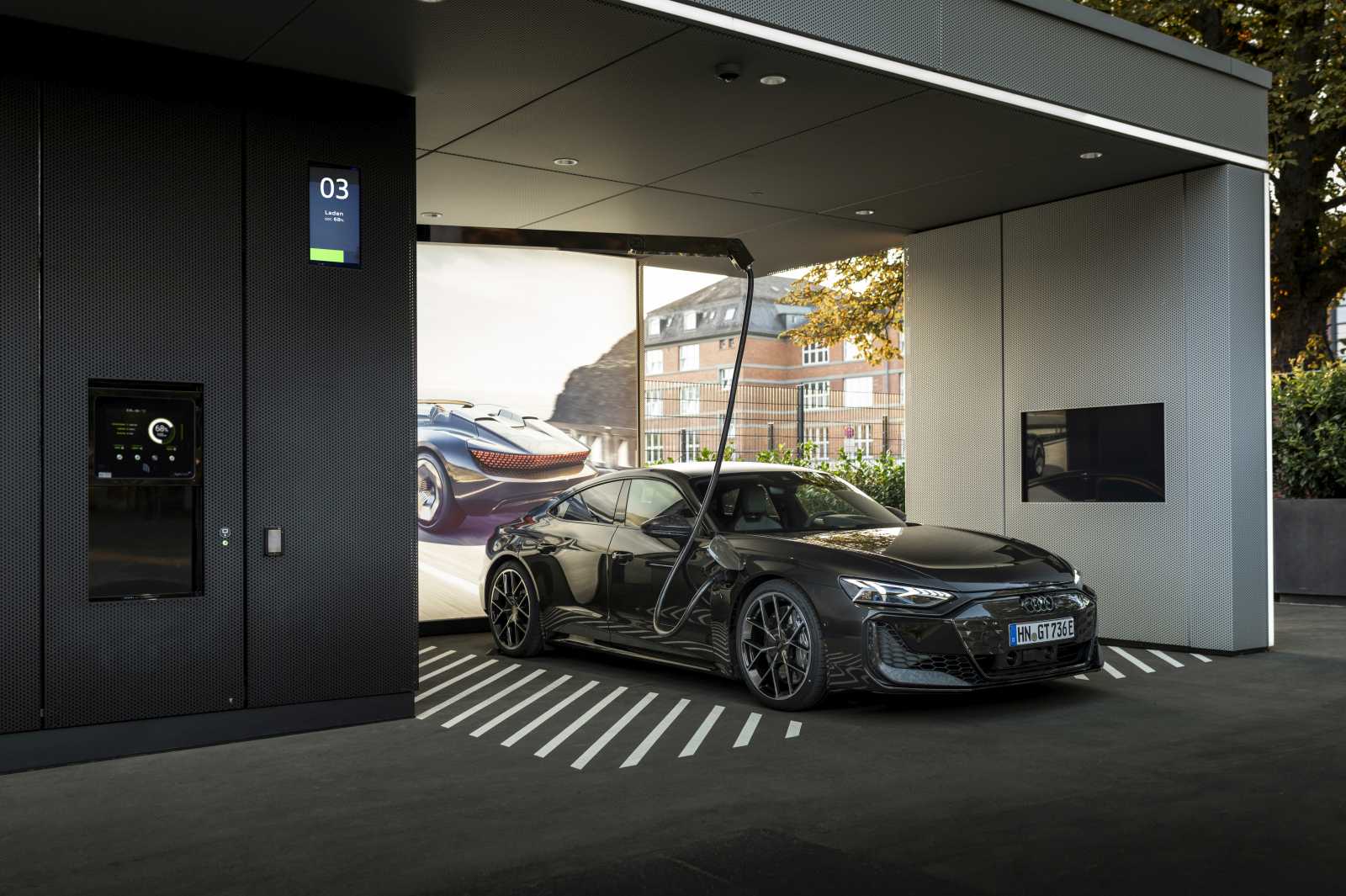Review – Audi RS e-tron GT (2024) – The future of gran turismo is here
Audi RS e-tron GT
Out of the Audi factory in Heilbronn rolls the fastest and most desirable thing Audi has to offer.
The most famous creation of this factory is the Audi R8.
Today, production here revolves almost entirely around the Audi e-tron GT.
In front of the factory door, we get the keys to the updated model pressed into our hands.
On paper, the electric gran turismo promises unprecedented performance.
Audi has revised the model with an even more powerful powertrain, improved range and faster charging times.
But before we explore that, let’s take a lap around the car.

Blades
Although the car has been significantly updated technically, the exterior changes are minimal.
The lineup consists of the Audi S e-tron GT and the more powerful RS e-tron GT, with the top model being the RS e-tron GT Performance.
The names may be a mouthful, but that shouldn’t spoil the fun.
The RS e-tron GT Performance immediately attracts attention with its sharp, sporty lines and striking details such as the 3D honeycomb structure in the grille and distinctive L-shaped blades that provide an aggressive look.
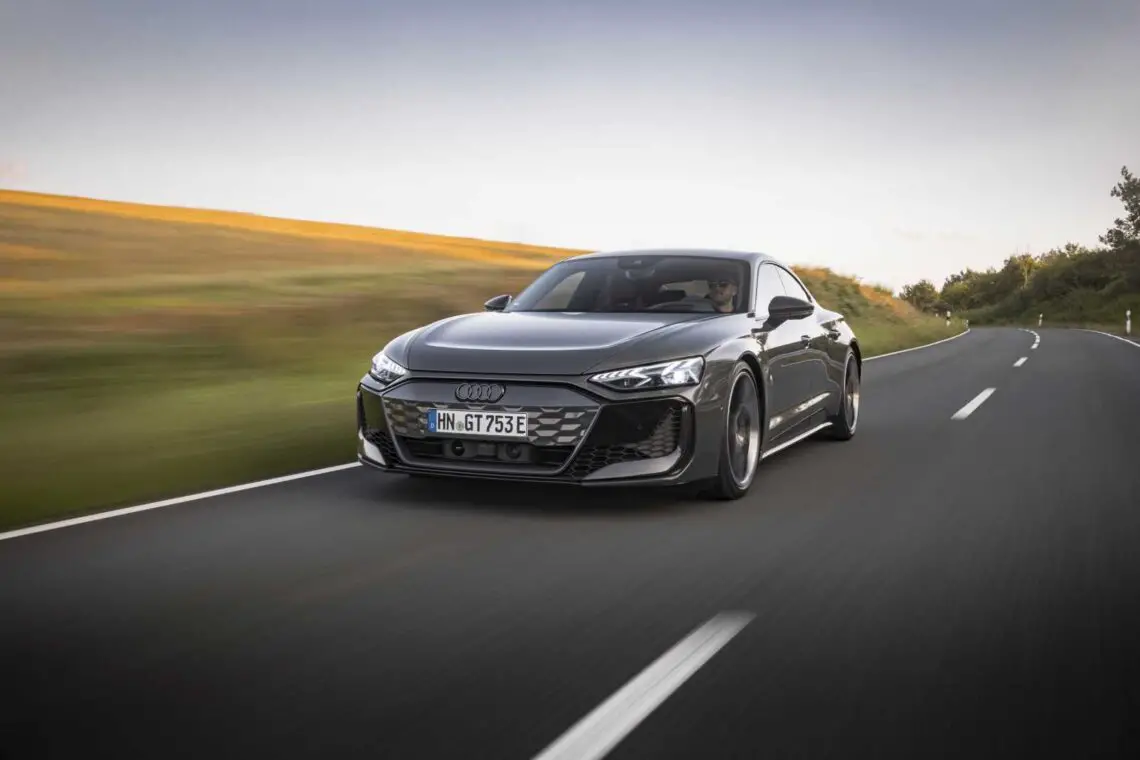
Nostalgia
Our test car was given a lick of Nimbus Gray paint, making it look elegant but intimidating at the same time.
Standard are now 20-inch rims, one size larger than before.
Optional 21-inch rims, inspired by the design of the 1991 Avus Quattro study model, add a touch of nostalgia.
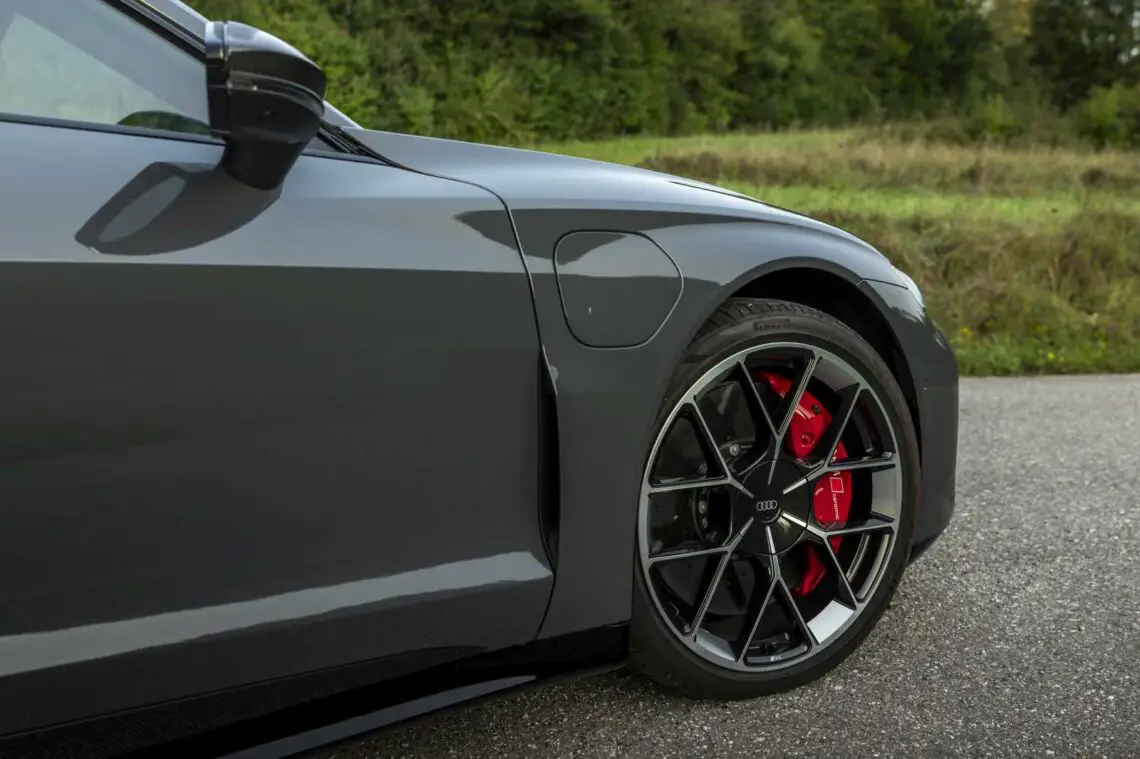
Inside, you are embraced by luxury and technology.
Electrically adjustable sports seats with integrated headrests, a flattened sports steering wheel – which, with its angular shape and Alcantara trim, looks more like a racing steering wheel – and high-quality finishes make the cockpit a pleasant place to spend time.
The Virtual Cockpit Plus offers numerous setting options, including the power display and speedometer with a white background, a nod to the classic Audi RS 2 Avant.
That the infotainment system does not have the fastest processor, we take for granted.
After all, we’re not here to game or scroll, but to drive.
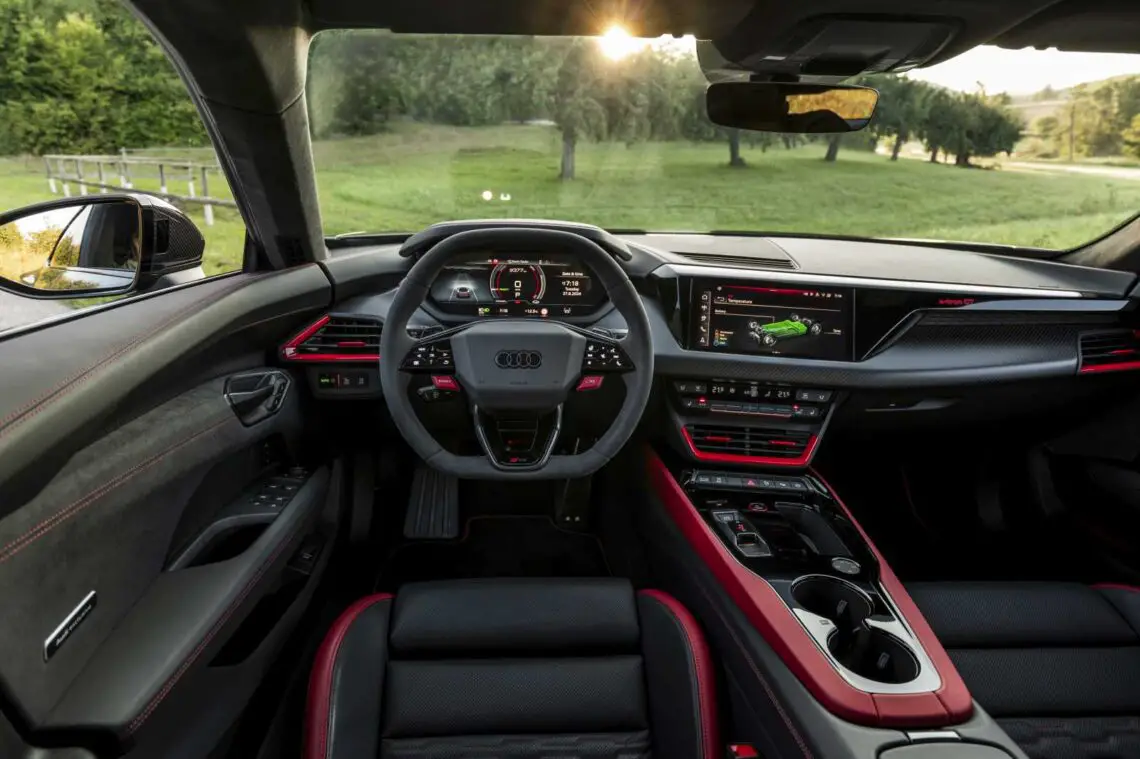
Performance and driving experience
Once on the road, it is impossible not to be impressed by the power the RS e-tron GT offers.
With a system output of 630 kW (857 hp) and torque that almost forces you through your seat, this car accelerates from 0 to 100 km/h in just 2.8 seconds.
That’s not even driving the top-of-the-line version.
The Performance version ticks 100 km/h in 2.5 seconds thanks to 680 kW (925 hp).
That’s faster than many a supercar on the market.

Quattro
Thanks to all-wheel drive – all variants are Quattro’s – the German EV has infinite grip.
Four-wheel steering ensures that your turning radius is small – pleasant in the city and when parking – but also that the weight turns a corner even more easily.
That weight is of course substantial, because the battery pack alone weighs over 600 kilos.
In practice, you won’t notice much of a difference, unless you perform antics on public roads that are better saved for the race track.
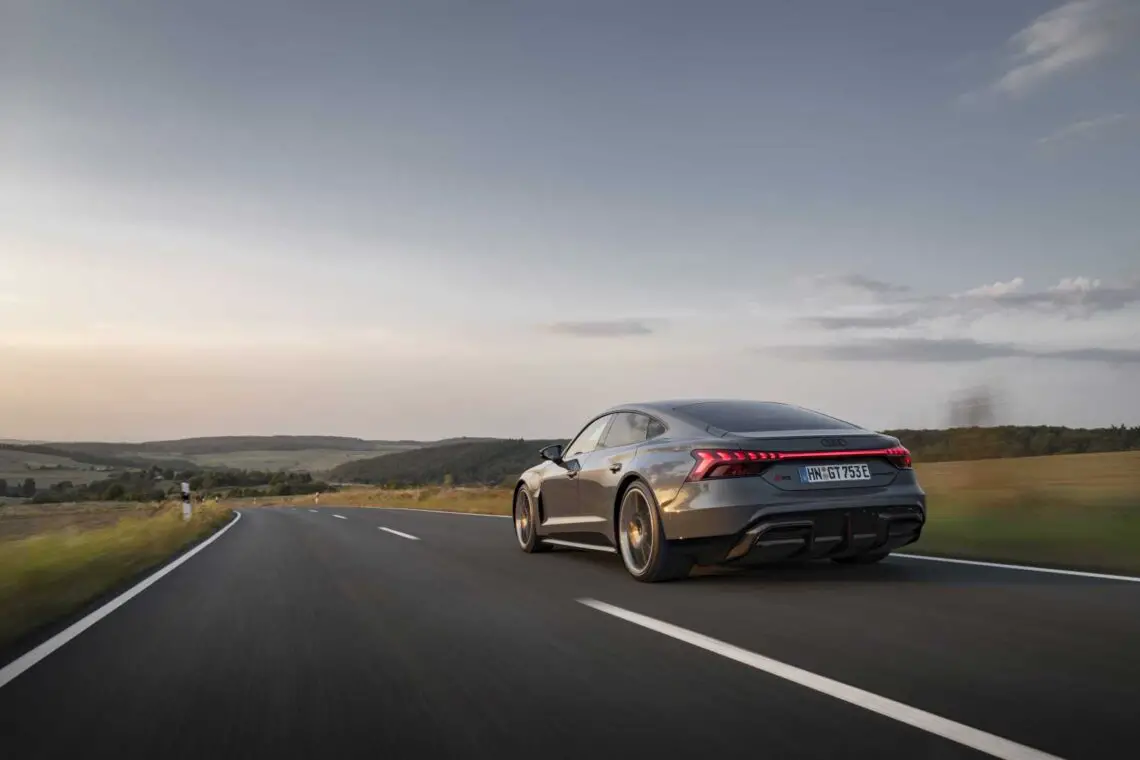
Jump in the air
The suspension with air suspension keeps the body remarkably stable even during firm cornering.
This is due to the “active suspension,” which always keeps the car neatly level.
When accelerating, it lifts the rear end, and when braking forcefully, the nose gets a push.
This keeps the car stable, along with the passengers.
When cornering, the system also minimizes rolling movements, which sometimes feels a bit unnatural during sporty driving.
In normal driving, it noticeably provides more tranquility and comfort.
An additional convenience: thanks to this system, the Audi can “jump up” as much as eight centimeters when you open a door and want to get in.
Suddenly this low sports sedan has the entry height of an ordinary passenger car, such as an Audi A6.
For those who until now ignored sporty cars because of low entry, that excuse is now a thing of the past.

King fast charging
The most impressive thing about the updated e-tron GT is not even its absurd power or advanced chassis, but rather its battery technology.
Although the capacity of the battery pack has increased slightly to 97 kWh (gross 105 kWh), it is still lighter than before thanks to a higher energy density.
The electric motors are not only significantly more powerful than those of the previous model, which had a maximum of 441 kW (600 hp), but also much more efficient, which translates into a significantly improved range.
The S variant now reaches a maximum of 609 km on a full charge, while the RS versions get about 50 kilometers less.
The real highlight, however, is the charging speed: the updated e-tron GT can handle a peak output of 320 kW and maintains this up to about 50 percent.
This allows you to charge the large battery pack to 80 percent in just 18 minutes, making the e-tron GT one of the fastest-charging EVs ever.
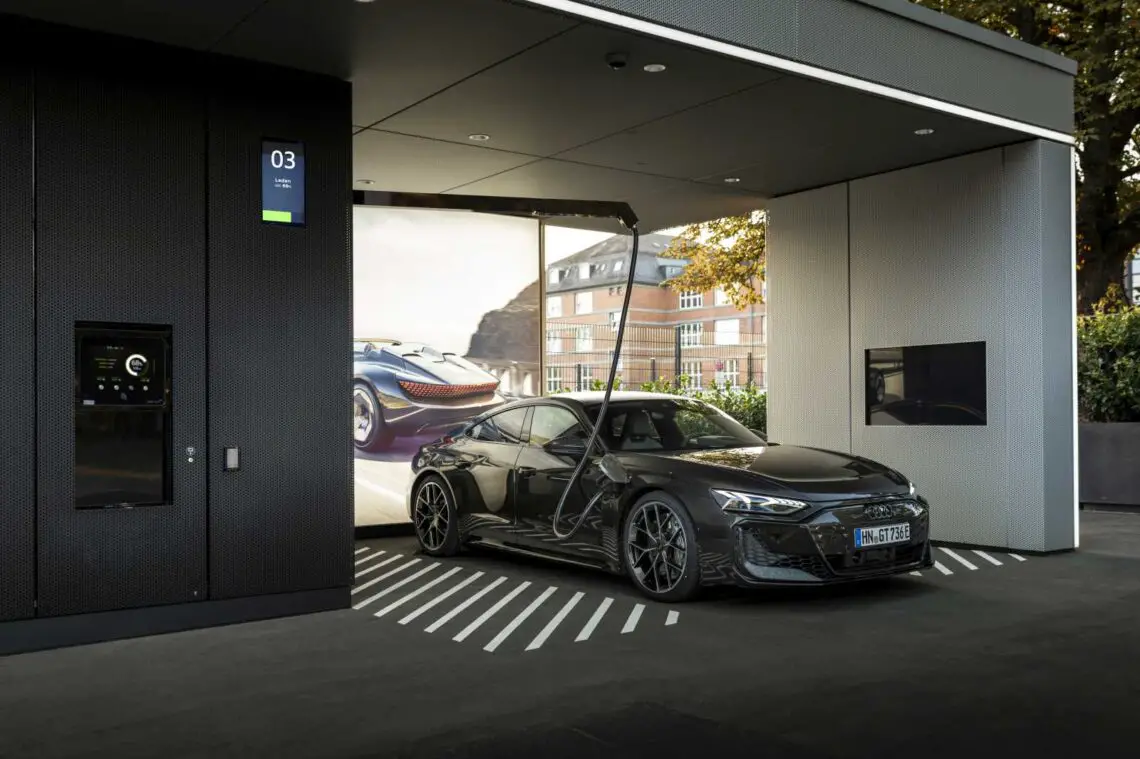
Conclusion
The redesigned Audi RS e-tron GT can do it all: 0-100 km/h in 2.8 seconds, fast charging up to 320 kW and cornering hookily while providing comfort for five people and all their luggage.
Like its technically identical brother, the Porsche Taycan, this Audi gets a high spot on our list of best EVs today.
With a starting price of 129,990 euros for the S e-tron GT and 164,990 euros for the RS e-tron GT performance, the electric GT is certainly not cheap, but for those who want the best in electric mobility and driving experience, it is worth every euro.
The future of the gran turismo is here and it drives electric.

